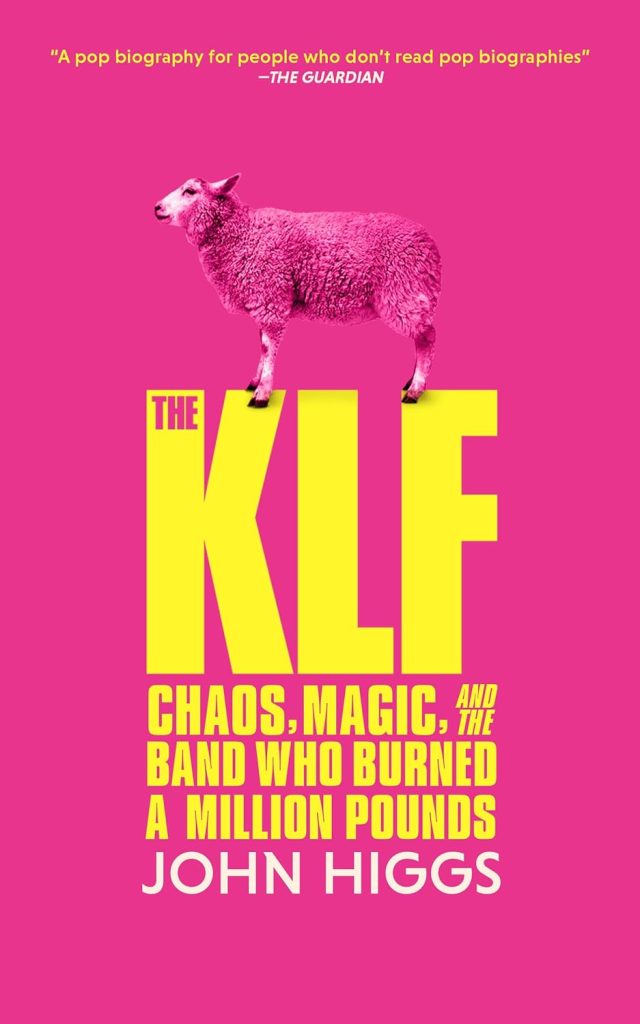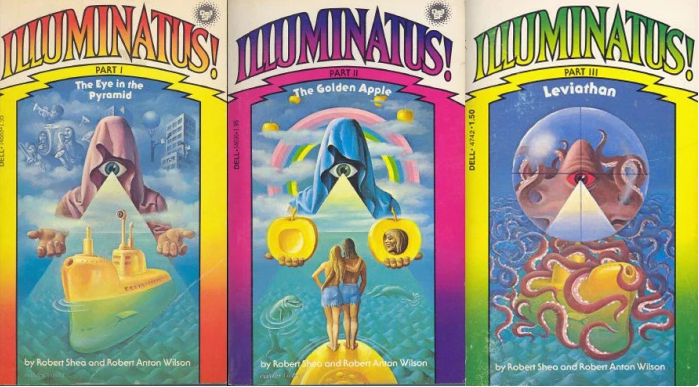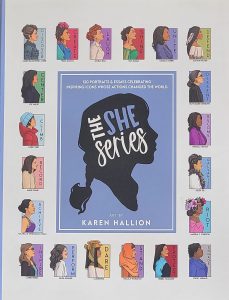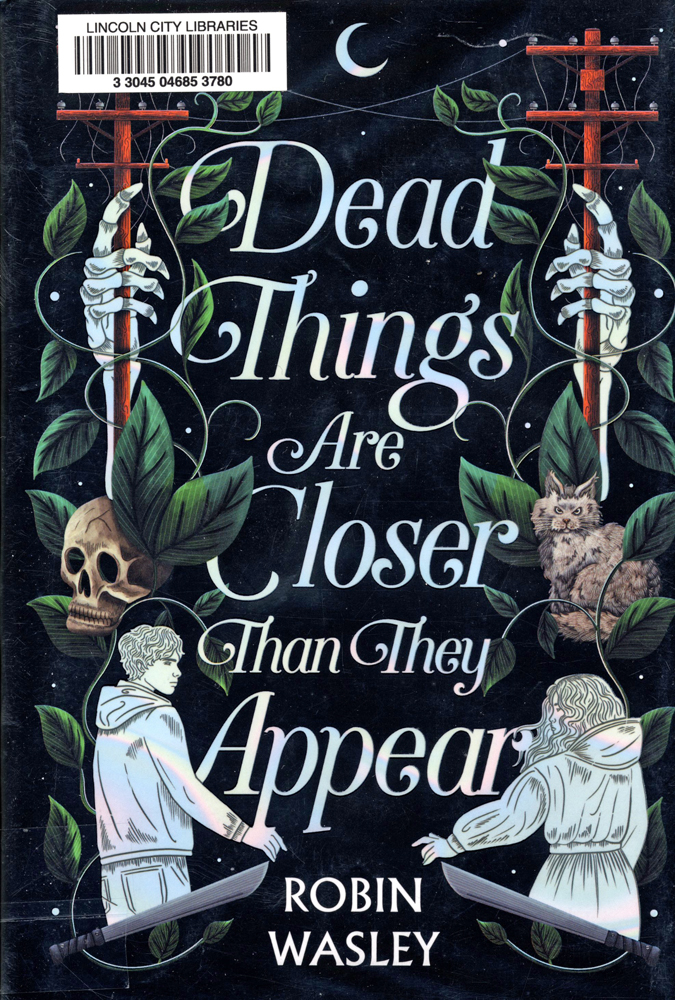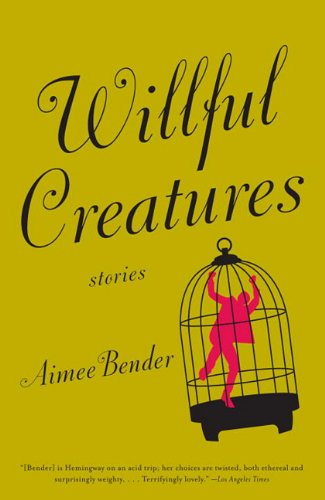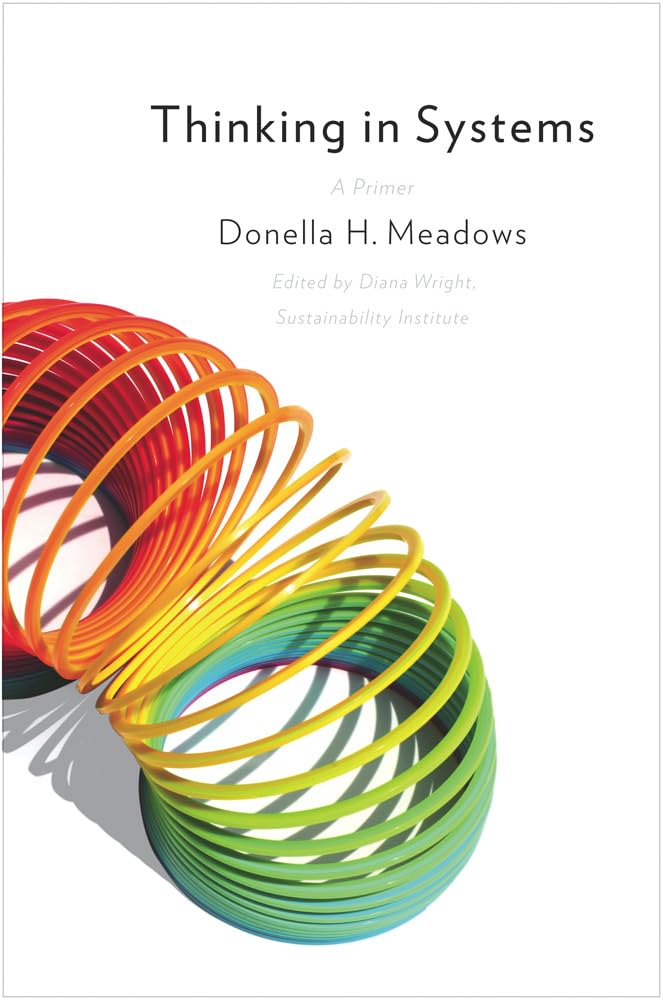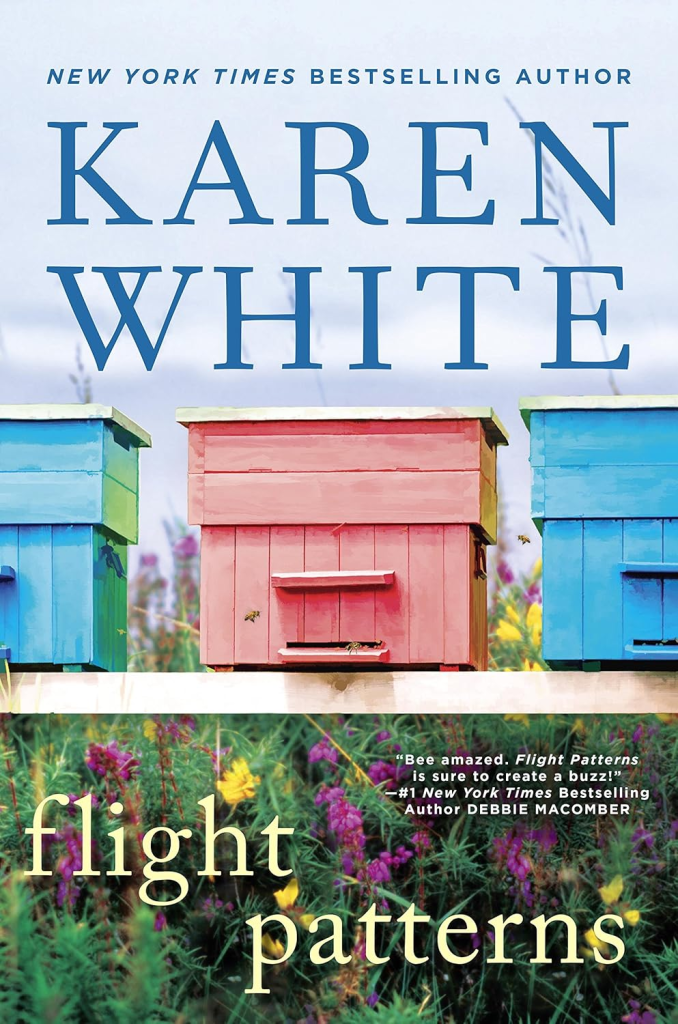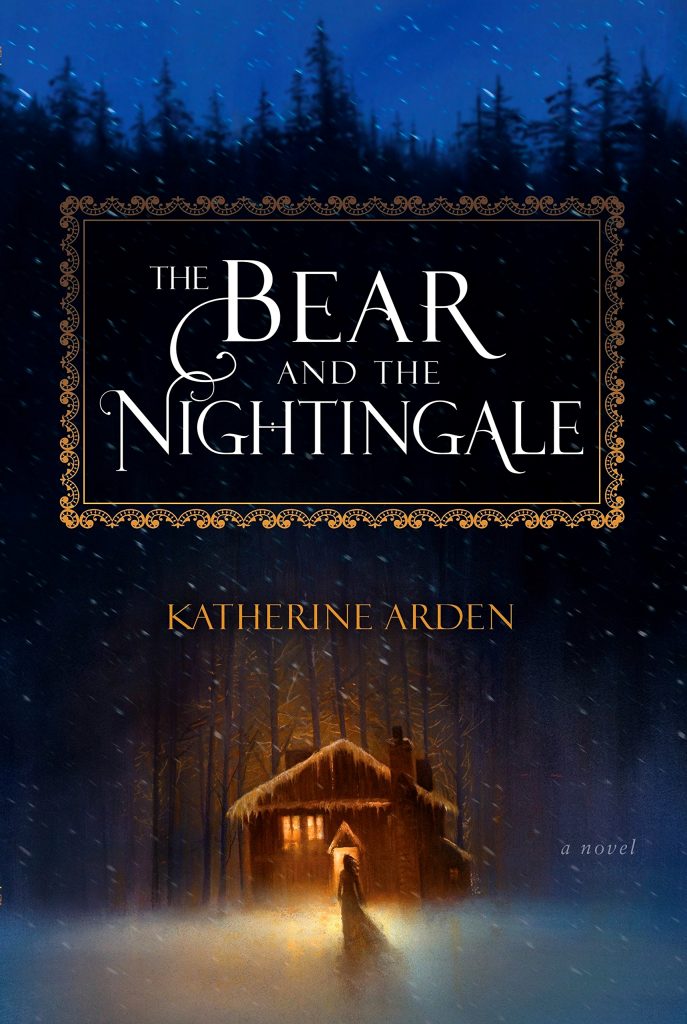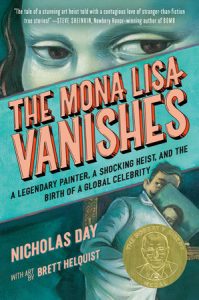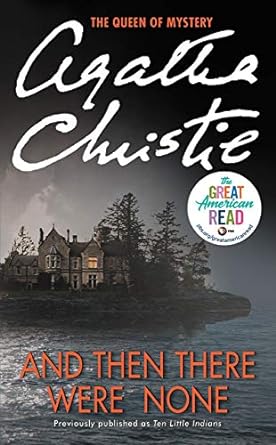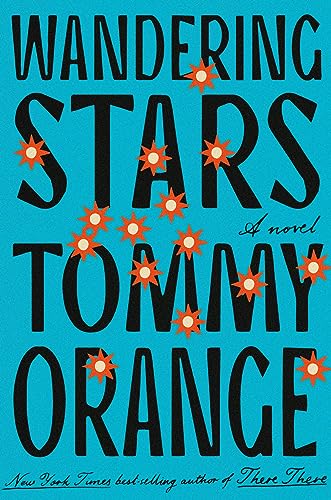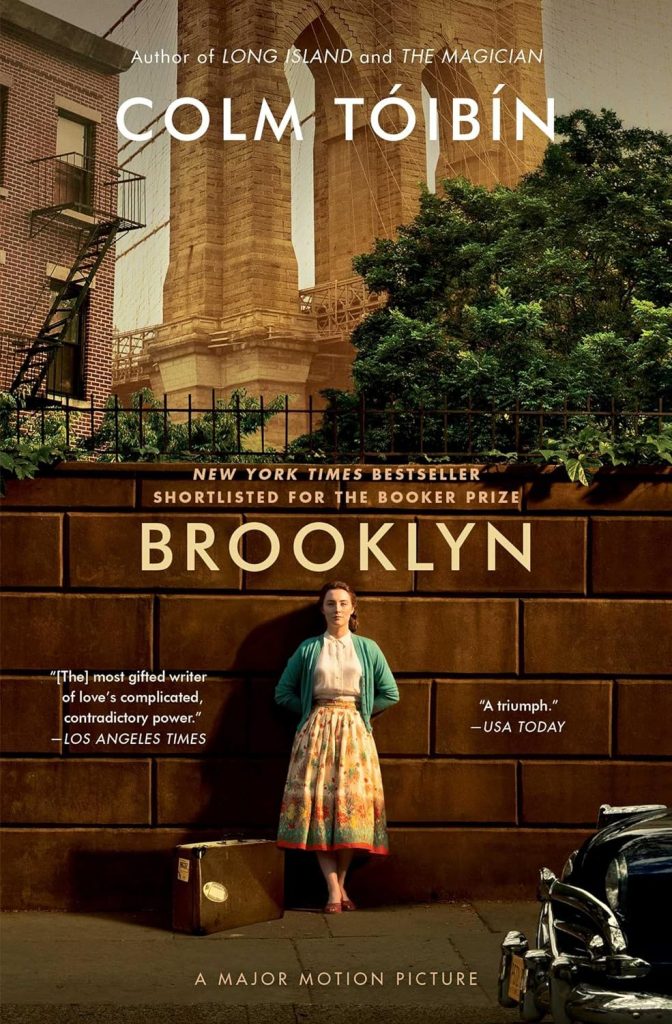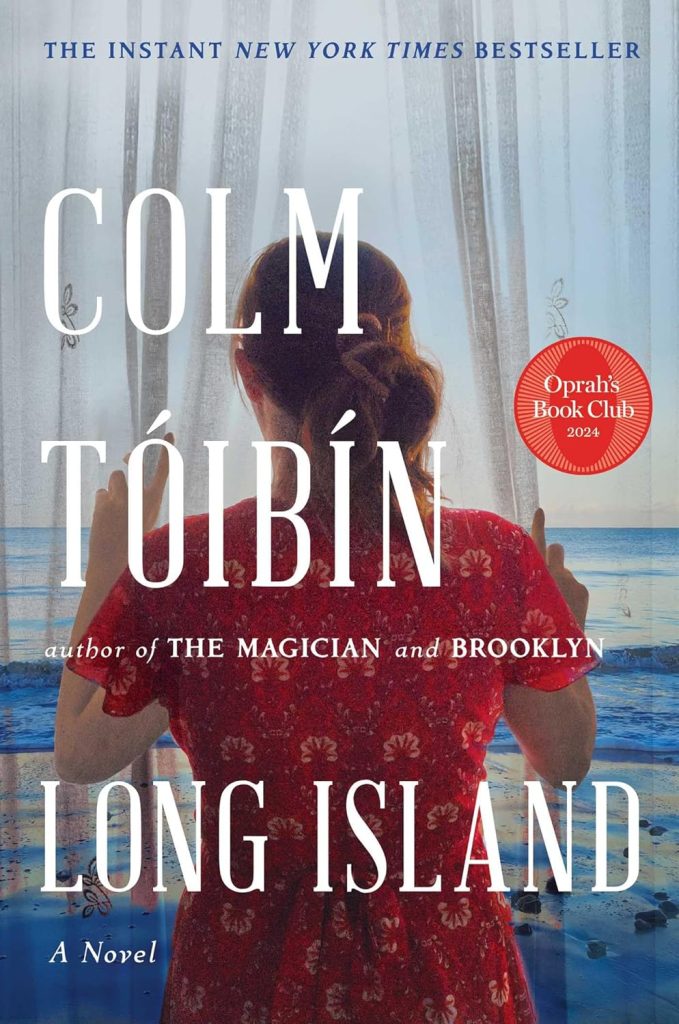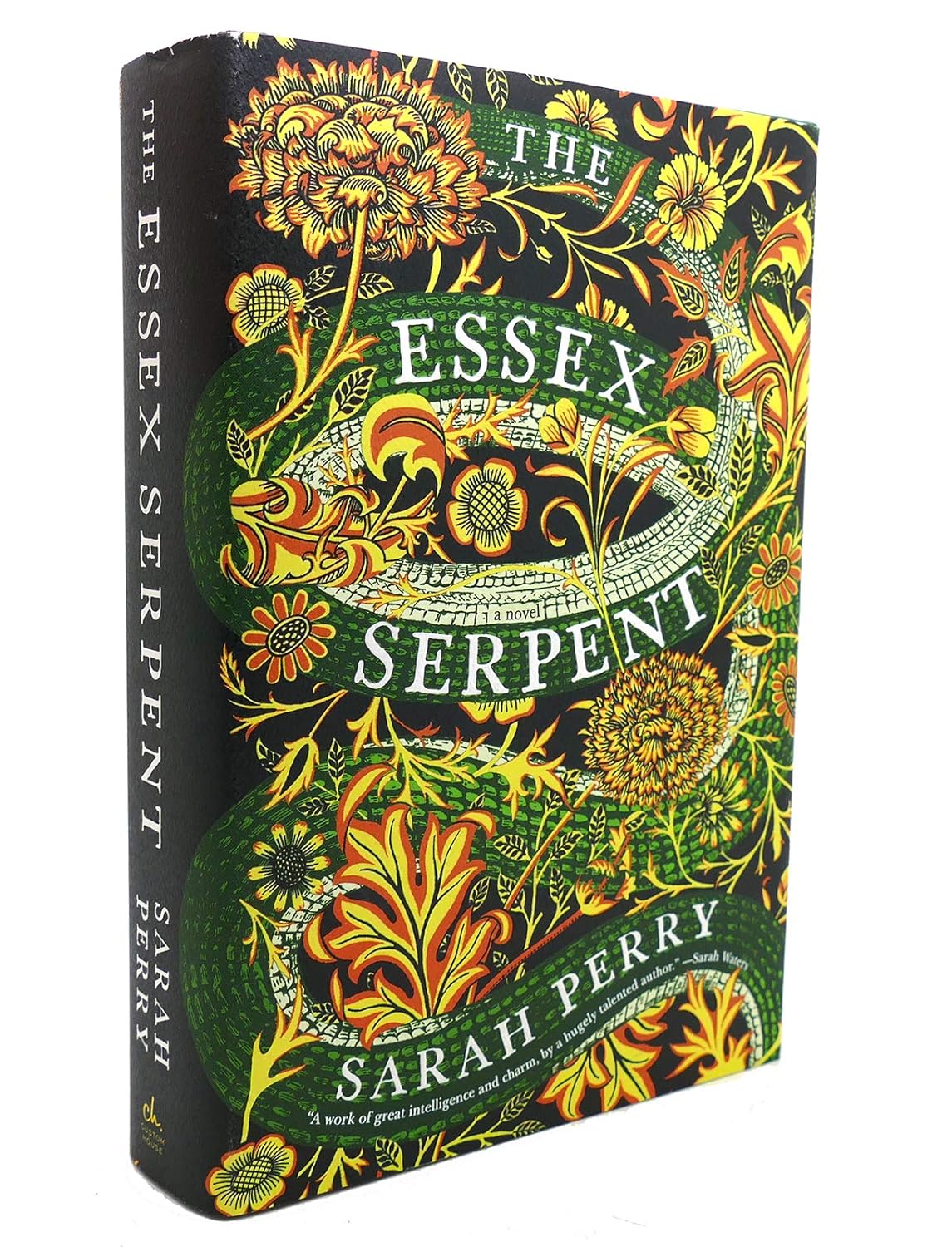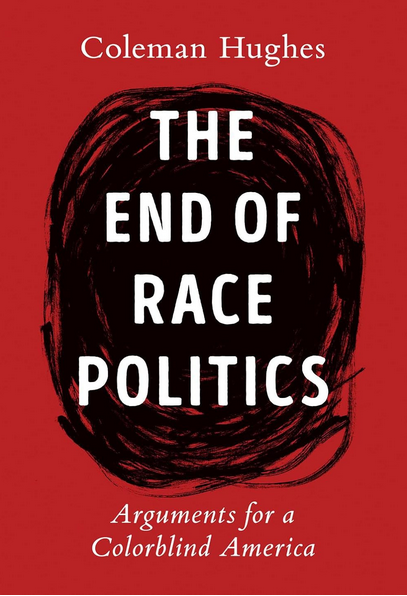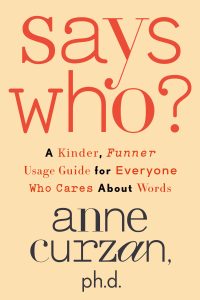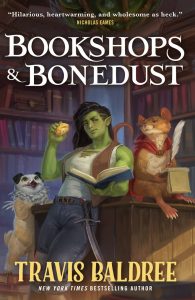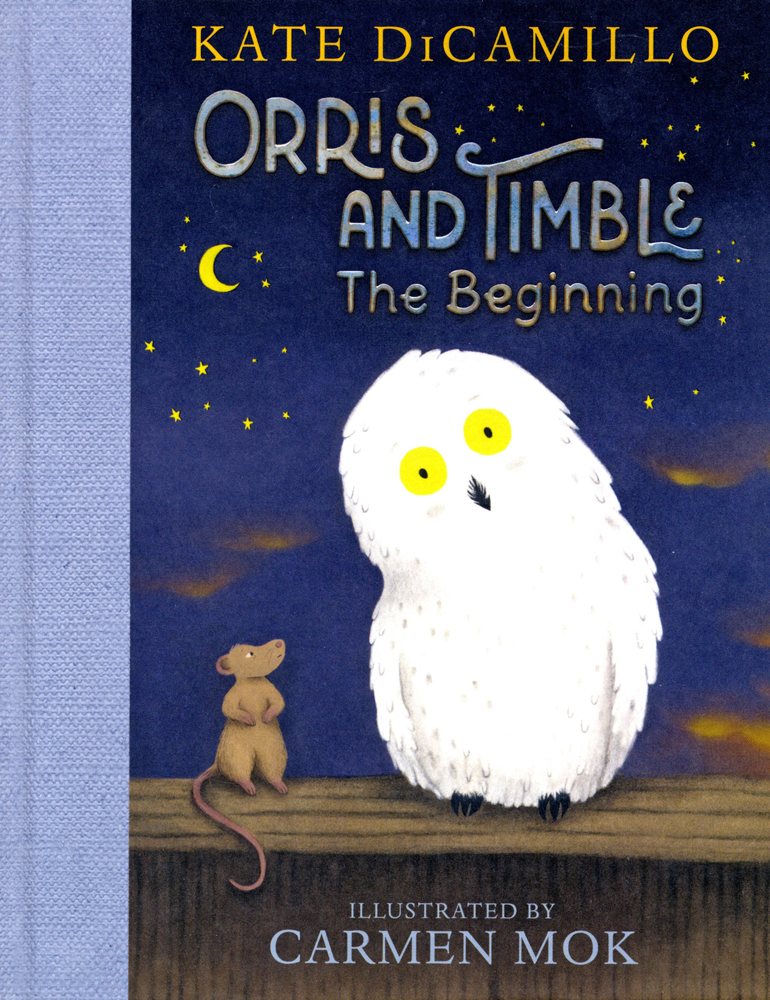Search the Blog
Categories
- Books & Reading
- Broadband Buzz
- Census
- Education & Training
- General
- Grants
- Information Resources
- Library Management
- Nebraska Center for the Book
- Nebraska Memories
- Now hiring @ your library
- Preservation
- Pretty Sweet Tech
- Programming
- Public Library Boards of Trustees
- Public Relations
- Talking Book & Braille Service (TBBS)
- Technology
- Uncategorized
- What's Up Doc / Govdocs
- Youth Services
Archives
Subscribe
Tag Archives: Friday Reads
Friday Reads: The KLF: Chaos, Magic, and the Band Who Burned a Million Pounds by John Higgs
Bill Drummond and Jimmy Cauty of UK band, The KLF, reunited for 23 minutes at 00:23 on August 23, 2017 (8+2+3+2+0+1+7=23) for one final show. It had been 23 years since their last performance.
In 1995 they had written up a contract banning them from discussing their band (The KLF), their art foundation (the K Foundation), or the unbelievable act they committed the year prior, for 23 years. The contract, written on the top of a ‘68 junker named Ford Timelord, was then pushed off a cliff. By this point, they had already deleted their entire back catalogue of music.
The year before, they had taken one million pounds of cash they made from topping UK charts to a Scottish island with a single press witness who recorded the event and they burned it all up. It was even verified by their bank.
They made it a movie and screened it all over the UK. After each show, they would invite the audience to debate why they burned it all and what it meant.
The public wrote them off as assholes. Not only had they burned an insane amount that most of us will never get close to, but they couldn’t even say why they did it.
Music Historian John Higgs returns to the question in his book, The KLF: Chaos, Magic, and the Band Who Burned a Million Pounds, to place it in a new context—magic.
To explain this, Higgs repeatedly turns to Alan Moore, friend of Drummond and creator of V for Vendetta and Watchmen. Moore speaks on a version of collective unconscious that he calls Ideaspace—a vast universe of ideas, invisible, but accessible to all of us. It includes the private and public, real and unreal, known and unknown; an endless place where ideas can be entire continents. It’s an ether of creativity, emotion and, in the furthest corners, madness. It does not exist but it creates. This is the magic.
I’m paraphrasing, but Higgs clarifies the path to arrival at this point: “As everyone from magicians like Moore to the most rational scientist will tell you, magic is only in the mind. But this, of course, is also the realm of art—it’s the role of art to explore and illuminate and express this very territory” (167).
Higgs traces The KLF’s journey into outer Ideaspace, moving farther and farther away from the busy main street of regular, everyday, easily digestible ideas. The spectacles they brought out of Ideaspace reflected this: they wore horns on their heads, performed fake pagan rituals, dressed as ice cream cones on Top of the Pops, they left a dead sheep at an award show after party.
Basically, this isn’t Harry Potter.
However, there is a work of fiction referenced throughout as well. The Illuminatus! trilogy by Robert Anton Wilson and Robert Shea was a sci-fi cult classic wrapped in discordianism, a 1960s neo-religion based in chaos and postmodern uncertainty.
The KLF’s first band name, The Justified Ancients of Mu Mu, was taken straight from the trilogy, and Drummond and Cauty made many references both to the trilogy, like their use of the 23 enigma. By tracing these connections, Higgs elucidates the ideas behind their crazy persona. Crazy, but meaningful to them; as Drummond put it, “there is humor in what we do, and in the records, but I really hate it when people go on about us being ‘schemers’ and ‘scammers.’ We do all this stuff from the very depths of our soul and people make out its some sort of game. It depresses me” (147).
Perhaps the money burning marks their point of no return into their ideas. Perhaps it was an attempt to break out of their spectacle and find deeper connection. Perhaps it was a ritual. Higgs doesn’t come to a solid conclusion, fittingly, but his reframing is thoughtful and so, so fun. Grab this copy from the Polley Music library, it is updated edition that includes their 2017 reunion. Their music has started reappearing online, too, while you’re at it.
Higgs, John. The KLF: Chaos, Magic, and the Band Who Burned a Million Pounds. 2012. Blackstone Publishing, 2024.
Friday Reads: The She Series by Karen Hallion
The She Series is a series of portraits that artist Karen Hallion has drawn celebrating strong women who inspire us. Each portrait is drawn in profile, with an action word along side. The first portrait was fictional: Princess Leia, with the word Rebel. Since then, her works have expanded to include non-fictional and male portraits.
The series has become very popular among her fanbase, with her followers on social media recommending people to be added. Hallion also asks for verb suggestions as she works on new sketches, making the project a collaboration with her fans.
In 2021, Hallion ran a Kickstarter to publish a book of some of the non-fictional women portraits, accompanied by essays written by Hallion and 58 other writers. This became The She Series: 120 Portraits & Essays Celebrating Inspiring Icons Whose Actions Changed the World.
Each essay is about 500 words, a nice quick read for when you’re looking for some motivation or just to learn about how women have impacted and influenced history.
In Karen Hallion’s own words:
My hope for this book is to show how important taking action is; that seemingly simple actions can be profound. In addition to this book being an informational biography about strong women, I hope it will also inspire people of all ages to take action in their own lives, even when they are afraid or told they shouldn’t do something. It’s just as brave and important to raise your hand in a classroom or speak up in front of friends as it is to dissent if you disagree with the other members of the Supreme Court.
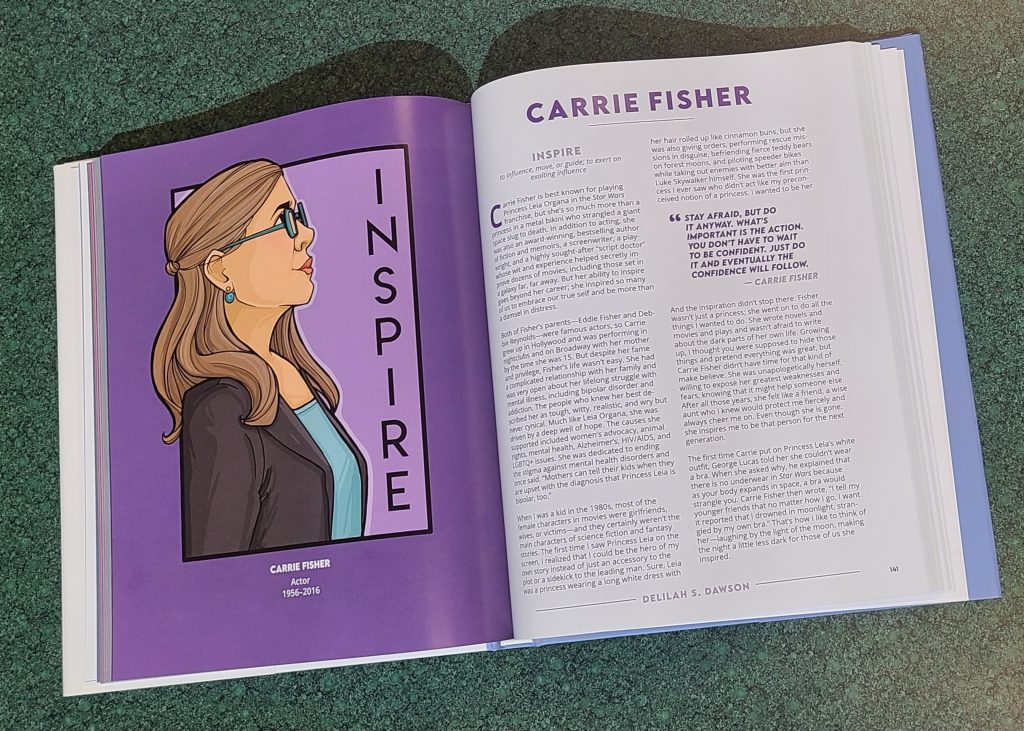
Friday Reads: Dead Things Are Closer Than They Appear by Robin Wasley
With Halloween later this month, it seems appropriate to choose a story of magic, mayhem, and monsters for Friday Reads.
Living in a town on the fault lines of the magic sealed into the ground … this was every-day to Sid (she’s 17). Occasionally wisps of something floated up from the ground – this was what the tourists were hoping to see.
But then, one of the several Guardians of the sealed area is killed, his key taken, and is used to open one of the several fault lines. Out comes threads of magic that attach themselves to people and animals. Also, zombies and other monsters are now on the loose.
The person behind this event – murder and destroying one seal, so far – keeps claiming magic should be for everyone – but he is absorbing all the magic he can find to keep for himself. He wants all the seals opened to absorb more magic.
Sid joins the remaining Guardians (her brother being one) and struggles to help make a difference in this situation. Who will survive? Who else will die?
As the December 1, 2023 issue of Kirkus says, “The thoughtfully developed characters grapple with issues of race, insecurities, self-absorption, isolation, connection, family, loss, grief, and empathy. …readers won’t want to put [it] down.” This book is written for older teens.
Wasley, Robin. Dead Things Are Closer Than They Appear. Simon & Schuster, 2024.
Friday Reads: Willful Creatures by Aimee Bender
You know those stories you (probably) read in your English 101 class? The ones that you still remember the experience of reading for the first time, decades later?
The Yellow Wallpaper; A Sound of Thunder; The Tell-Tale Heart; The Lottery?Willful Creatures by Aimee Bender is that experience, on repeat. The Los Angeles Times called the anthology, “Hemingway on an acid trip; her choices are twisted, both ethereal and surprisingly weighty … Terrifyingly lovely.”
“Twisted,” “ethereal,” and “weighty” are all superb descriptors for these stories. I do disagree with “Hemingway on an acid trip,” not because of the Hemingway comparison — which I find mostly apt; Bender uses long, winding sentences that don’t end up where one might expect — but because of the acid trip. That, to me, implies a lack of control, and Bender’s prose is anything but. It’s sharp and witty, well-crafted, well-paced, and intentional. Her stories operate on her own internal logic. Now, the reader may feel like they are on an acid trip: the zany, kaleidoscopic stories are both vivid and vague, like a particularly striking dream that leaves one discombobulated upon waking, but fades to half-remembered images and emotions ten minutes after.
I first read this book in my very first semester as a college freshman, over a decade ago. I was gobsmacked. Awestruck. I didn’t realize that people could write like that. I have not read the collection in its entirety since then, and so I was eager to find out what I thought now. There are only one or two stories that I find to be weaker — “Jinx” and “I Will Pick Out Your Ribs (from My Teeth)” — but the rest are solid, achieving a response that I only experience when reading a particularly fantastic poem.
My favorite stories from this collection are mostly in Part Three: “Dearth,” the tale of a woman who finds her cast-iron pot filled with potatoes, which return every day after she gets rid of them, and which slowly grow potato arms and legs and heads like children, increasing her desperation to rid herself of them (yes, she does eat one). “Job’s Jobs” is the story of God’s vendetta against a writer, and how the writer wins. “The Leading Man” is about a boy who is born with nine keys instead of fingers (his pinkie being the only exception), and who goes through his life seeking the matching locks. “Hymn,” the final story, is one of my all-time favorite short stories and is about a series of strange births. It ends with the lines: “my genes, my love, are rubber bands and rope; build yourself a structure you can live inside. Amen.” and it makes me cry every time. In fact, as I re-read this collection for the first time in years, I was struck by how many of the stories’ final lines were an emotional gut-punch. It’s like coming out from under hypnosis and then being informed that your dog was just hit by a car.
These stories must be approached with an open-mind. You cannot resist their strangeness, even when it disgusts you, otherwise you will miss something. There may be the instinct to retreat, to write the surreal tales off as nonsense (or an acid trip), but that, in my opinion, trivializes what Bender might be trying to do. I use the word “might,” because I still don’t understand some of them, even the ones that have stuck fast in my mind (“End of the Line,” the story about a very tiny man who is abducted and abused by a regular-sized man). But I think Bender is saying something about the inanity of life while simultaneously wrestling with — or arguing for? — the meaning of life. There’s an undercurrent of grief running through every story — I can see the shape of that, more clearly, now that I am older (wiser? sadder.).
If you like Willful Creatures, you will probably enjoy Bender’s full-length novel, The Particular Sadness of Lemon Cake. Somehow, Bender is able to maintain what she does in a 7-20 page short story through almost 300 pages. She has the range, darling.
Bender, Aimee. Willful Creatures: Stories. Anchor Books, 2005.
Friday Reads, The Book that Wouldn’t Burn, by Mark Lawrence
I’ll always pick up a book about a library or bookstore. The Book that Wouldn’t Burn, by Mark Lawrence, is just such a book. The library is a character in itself, mysterious, magical, dangerous, not just for the information in it, but for what lies in its chambers, and the knowledge of all the races it encompasses. Livira was born with a name but gained the name of a persistent weed of her arid homeland, because she’s just like it. She’s tenacious, stubborn, with a mind like both a sponge and a steel trap. Evar has only ever lived in one chamber of the library, like his found family of brothers and one sister. They were all put into a mechanism in the center of the library long ago, one each with a book, and came out long afterwards, with all the skills and even the mindset of the book and author. Except for Evar. He came out feeling as if someone was missing or had been taken from him.
We meet Livira at her home in the Dust, at age 8, when a canine race overruns the small settlement and takes the children captive. They are saved by a command of soldiers from a nearby city, and marched to the city, to be put to work there. Livira, as is her way, decides to take matters into her own hands, and ends up working in the Library. In a distant future, Evar is first found attempting to reach the ceiling of the chamber of the Library he & his siblings have never been able to leave, except through the Exchange, the mechanism that brought them together through time. He’s in his early 20s. So of course, we see more growth in the character of Livira, as she grows older, working in the library. There is more to Evar—he’s the only one of the siblings with a last name—Evantari.
Nowhere in the Library is safe—in either Livira’s time, or Evar’s. Mechanisms both helpful, neutral, and dangerous, wander the chambers that Livira’s time can access. In Evar’s time, his family is protected by two such mechanisms, against monsters called Escapes.
At the beginning if feels like a fantasy, or an end of empire or failing colony story. The further into the book I read, the more interesting the themes became. I hadn’t been acquainted with the author, but after reading reviews, discovered he was going to do something different (paraphrase from Grimdark Magazine, review by John Mauro), and even in the blended fantasy science fiction genre, it is different. It does speak to many timeless themes—should knowledge be free to the masses, should advanced technology be accessible to less advanced societies. Even the state of refugees in times of crisis. It hints at mechanisms that span time and place, machines far above the current society’s technical level. Even sayings like “we’re not in Kansas anymore” appear, even though they have no idea what or where Kansas is or was. The Library, sometimes called the Athenaeum, has always been there. It has rooms that only open to the species that it has books from. So far, three species are known. My suspicion is that none is native to the planet, which is never named.
I enjoyed The Book that Wouldn’t Burn so much that I read the next title in the trilogy, The Book that Broke the World, and am waiting for The Book that Held Her Heart, out in April 2025.
The Book That Wouldn’t Burn, by Mark Lawrence, book 1 in The Library Trilogy, Ace (Penguin Random House), 2023, hardback, 9780593437919, 559 pages,
The Book That Broke the World, by Mark Lawrence, book 2 in The Library Trilogy, Ace (Penguin Random House), 2024, hardback
Friday Reads: Thinking in Systems by Donella Meadows
Last night I went to a Community Building workshop on affordable housing here in Lincoln. To be clear, I personally have affordable, well-maintained housing. My landlord is cool. He fixes stuff. But apparently that’s not so true in the Near South Neighborhood. Probably other neighborhoods too.
I heard about code violations, landlord retaliation, rising housing costs, and mold aplenty. So very much mold. Everyone in that room knew about the problem, but was looking for a solution. That’s where Thinking in Systems by Donella Meadows comes into play.
That was the first comprehensive book I read about systems thinking. In a nutshell it says what we all know to be true: one things affects another, which affects another in a big, messy cycle. In this case, housing structures are designed and built decades ago. Funding is raised for building and construction, but all houses need repair eventually. The landlords who own the units do not always have funding for costly repairs, like extensive mold damage or updated plumbing. Some just plain don’t seem to care. I could go on. It’s just turtles all the way down.
Thinking in Systems talks about how to bring some order to the chaos. I read this book many moons ago, but it was one of the things that inspired me to make this Affordable Housing Map that shows what it takes to tackle the problem statewide. View it on a desktop. Maybe a tablet. It’s too big to see on a smartphone.
The map is one way to visualize a system, but that gets paired with root cause analysis to dig deep and make sure efforts are addressing the right problem. Finding new and different ways to bring people together to share ideas, innovate and collaborate are good tools too , among others.
All in all, it turns out I like to think in systems. Who knew? I’m a systems nerd! Give this book a read if you want to find out what it takes to solve the big, messy problems of the world.
Friday Reads: Small Acts of Courage: A Legacy of Endurance and the Fight for Democracy, by Ali Velshi
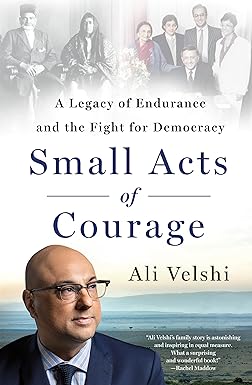
Many readers will recognize Ali Velshi, author of Small Acts of Courage, as a journalist who’s worked for CNN, Al Jazeera America, and MSNBC. Small Acts of Courage is not a typical celebrity memoir, however. Instead, it is a family story dating back to the late 19th century. It starts in Gujarat, India, with Velshi’s great-great-grandfather, and follows subsequent generations as they relocate to South Africa, Kenya, Canada, and finally, in Velshi’s case, the United States.
One thing I appreciated about this book was the historical perspective it provided. It answered questions about the Indian diaspora, especially as it exists in South Africa and Canada, and also connected some dots about the impact of the British Empire and colonialism on migration. The biggest takeaway, however, relates to the lessons Velshi learned from his family about the importance of civic engagement and pluralism in a healthy democracy.
Having grown up in South Africa under apartheid, Velshi’s parents knew the destructive power of racial segregation, as well as the impotence of having no political voice. So when they moved to Canada in the early 1970s, at a time the country was not only actively welcoming immigrants but had also adopted an official policy of multiculturalism, they were all in. They became politically active, served on boards and committees, and dedicated themselves to building and participating in a civil society. Velshi’s father even ran for political office in 1981, not because he had a chance to win, but because at that time virtually no immigrants did so; he felt someone needed to show the immigrant community they could: “There was a point to be made, that you could run for office here without landing in jail or being shot by somebody, and it had to be done if for no other reason than to prove that it could be done” (188-189).
Although Velshi writes about earlier generations of his family rubbing shoulders with Gandhi in South Africa—Velshi’s great-grandfather was Gandhi’s contemporary and friend and his grandfather was Gandhi’s youngest student at Tolstoy Farm ashram–this book isn’t about the impact big-name historical influencers have on society. It barely even touches on Velshi’s life as a jet-setting journalist. Instead, it’s a celebration of and an argument for the contributions of everyday people who serve society by serving others. People like his sister, a civil servant in Toronto who performs “the grueling, thankless grunt work of citizenship” (237). And his parents, whose Canadian citizenship “was something they created, something they built themselves out of the raw materials and opportunities [they had] access to” (266.) I’d say the main takeaway from Velshi’s book is that citizenship is “a muscle that atrophies if you don’t use it . . . “ (266). If this is a message that resonates with you, be sure to check out Small Acts of Courage.
Velshi, Ali. Small Acts of Courage: A Legacy of Endurance and the Fight for Democracy. St. Martin’s Press, 2024.
Friday Reads : Flight Patterns, by Karen White
I recently picked up Flight Patterns, by Karen White, at a library book sale. And while the author was new to me, what really drew my attention was not just the description of the story, but of the story’s location: Apalachicola, Florida. Apalach, as it’s known to it’s residents, is a town not far from where I grew up and that offers some of the most beautiful homes, gorgeous beaches, and best seafood in the entire South. Flight Patterns tells the story of a woman coming home to the Apalach family she left behind – and to the woman she always wanted to be. In the telling of this woman’s story, Ms. White has done such a magnificent job of describing the beauty of the town, area and people, that it brought back many fond memories of summer days there with my family. As per my usual habit, I both read and listened to this title, and was riveted from beginning to end, as I’m sure you will be too!
Georgia Chambers has spent her life sifting through other people’s pasts while trying to forget her own. But then her work as an expert on fine china – especially Limoges and the mystery surrounding a particular pattern – requires her to return to the one place she swore she’d never revisit: her home town.
It’s been 13 years since Georgia left her family home on the coast of Florida, and nothing much has changed except that there are fewer oysters and more tourists. She finds solace in seeing her grandfather still toiling away with his bees in the apiary where she spent much of her childhood, but encountering her estranged mother and sister leaves her rattled. Seeing them after all this time makes Georgia realize that something has been missing – and unless she finds a way to heal these rifts, she will forever be living vicariously through other people’s remnants. To embrace her own life – mistakes and all – she will have to find the courage to confront the ghosts of her past and the secrets she was forced to keep. **Synopsis courtesy of Audible
Friday Reads: The Bear and the Nightingale by Katherine Arden
With the last few days of heat warnings, a story about endless winter nights and frost-demons seemed like a good choice.
Told much like a fairy tale, the story centers on Vasilisa, who lives with her father, nurse, and siblings in a small village at the edge of a great frozen wilderness. The village exists somewhere between the influences of the “modern” religion and the “old” faith which honors the spirits of the house and surrounding forest, who have always offered protection. Most nights are spent around the hearth listening to stories, especially the one about the evil frost-demon lurking in the woods.
Vasilisa has always been a strong, rebellious child with dreams of adventure and no desire to marry or settle down. When her father decides it’s finally time to remarry (and hopefully find a positive role model), he brings home her new stepmother, Anna, from the city.
Fiercely devout and fighting against a terrifying curse, Anna forbids all practices related to the old spirits. A young priest follows shortly after, determined to prove himself by “saving” the village and returning to the city as a hero. As evil creatures grow closer and the village suffers, Vasilisa becomes a target due to her own strange gifts.
Defying those she loves most, she has to find the true cause and battle against the darkness to save them all.
The Winternight Trilogy:
- 1. The Bear and the Nightingale
- 2. The Girl in the Tower
- 3. The Winter of the Witch
Arden, Katherine. (2017). The Bear and the Nightingale. Del Rey.
Friday Reads – The Mona Lisa Vanishes by Nicholas Day
Did you ever wonder why the Mona Lisa is so famous? Surely it’s because Leonardo Da Vinci was such a talented artist. Or perhaps the actual Mona Lisa was so beautiful and beloved that artists clamored to paint her portrait? Or… perhaps the painting gained its stature as one of the most recognizable pieces of art worldwide because of a little incident that took place 113 years ago this week, on August 21, 1911. A mysterious man in a white smock hid inside a closet at the Lourve until the museum was closed, and when the coast was clear, he took the Mona Lisa off its wall, removed its frame, and walked out the door.
And thus begins Nicholas Day’s “The Mona Lisa Vanishes: a Legendary Painter, a Shocking Heist, and the Birth of a Global Celebrity.” Curious to find out more? I certainly was!
Day weaves a compelling tale of how lax security at the Lourve and a bungled police investigation led to an international fascination with a small painting most of the world had never seen. Intertwined with the intrigue of the art heist is the rather absurd life story of Da Vinci himself and how he came to paint the Mona Lisa – one of the few endeavors he seems to have carried out to completion. Brilliant but easily distracted, Leonardo Da Vinci was famous for his flakiness as much as his talent.
Aimed at middle-grade readers, this fast-paced work of narrative nonfiction should hold the attention of mystery-lovers of all ages. Fans of the “A Series of Unfortunate Events” books by Lemony Snicket may recognize the illustrations of Brett Helquist throughout.
Day, Nicholas. (2023). The Mona Lisa Vanishes. Random House Studio.
Posted in Books & Reading, General
Tagged art history, art theft, books, Da Vinci, Friday Reads, middle grade, Mona Lisa, narrative nonfiction, Reading, True Crime
Leave a comment
Friday Reads: “And Then There Were None” by Agatha Christie
I’ve always been fascinated by puzzles. Murder mysteries are a unique kind of puzzle, guiding you through an entire scenario through specific points of view to only show you exactly what the author wants you to know. The smallest of details can be crucial information, and information that seemed critical could turn out to be an outright lie. It makes your head spin, and when you finally learn the truth all of the little puzzle pieces click together in your brain in the most satisfying way. Despite my love for a good mystery, I have never read an Agatha Christie book- until now. And what better place to start than with the World’s Favorite Christie, And Then There Were None?
“The whole thing is utterly impossible and utterly fascinating. It is the most baffling mystery Agatha Christie has ever written.” – New York Times
The majority of the book takes place on Soldier Island, an isolated small island off of the Devon coast. Ten strangers are invited by U.N. Owen to stay at their manor, all for various reasons. Once all the guests have arrived and see that their gracious host is nowhere to be seen, the mystery begins. A phonograph is played and a voice fills the room, charging each and every guest with murder and declaring them prisoners. By the end of the night the first death happens in front of them all, and they must face the fact that somebody has summoned them here in order to kill them.
The book jumps between the perspectives of different guests, giving us insight into how they are handling the events and who each of them may suspect is the murderer. After all, it could very well be one of them. Not to mention the ominous poem in each of their rooms, counting down the deaths of ten soldiers in a rather ominous nursery rhyme with gruesome deaths that just so happen to match up with the increasing number of deaths on the island.
It’s a dizzying story that had me turning pages both forward and back, re-reading passages to try and discover the mystery for myself. Writing an engaging mystery with twists and turns, while keeping it plausible is quite the task, and Christie herself described crafting the mystery as “so difficult to do.” The epilogue wraps everything up in a neat little bow that I’m still thinking about days after finishing the book.
Agatha Christie is responsible for many of the mystery clichés and tropes that we know and love today. It seems her title of “The Queen of Mystery” is well earned, and I look forward to digging further into her sizable collection of mystery novels.
Christie, Agatha. And Then There Were None. William Morrow Paperbacks. 2011
Posted in Books & Reading, General
Tagged Agatha Christie, And Then There Were None, Friday Reads
Leave a comment
Friday Reads: Wandering Stars by Tommy Orange
Tommy Orange’s latest book, Wandering Stars, is both a prequel and a sequel to his Pulitzer Prize finalist, There There. Wandering Stars was recently longlisted for the Booker Prize, and seeing that news reminded me I needed to check this book out. If you read There There, you know that Orange adapts narrative structures with more success than a reader might expect. Wandering Stars takes this distinctive world-building further—it’s more of a world rebuilding after a world destruction. It’s heartbreaking and breathtaking at the same time.
Orange is an enrolled member of the Cheyenne and Arapaho tribes of Oklahoma. He lives in Oakland, California, and the Bay Area is often featured in his writing. I’m going to quote the publisher for a quick synopsis that I can’t improve upon: “Wandering Stars is a novel about epigenetic and generational trauma that traces the legacies of the Sand Creek Massacre of 1864 and the Carlisle Indian Industrial School through three generations of a family.”
You don’t need to know the violent colonial history, already, to understand the story. Orange fills in enough detail for the most unacquainted reader to understand the context, and still relates the history in a poetically short (yet relevantly detailed) way. He does this so effectively that a reader, who might be previously familiar with facts about boarding schools and massacres, will somehow get a freshly horrible perspective on the history, and what it means for the characters’ lives and relationships.
I enjoy how Orange creates his characters on the page, and how they exist within context of each other. Even when a character can’t face sharing their pain with others, or face sharing the pain (or happiness, or acceptance) of others, they find they can’t escape this demanding, rewarding intersection of other identities. People are important to other people, and it’s a dynamic, fluctuating, frustrating, and wonderful thing.
I remember telling someone that I had listened to the audiobook of There There, and that person wondered how well the audiobook could work, considering the multiple narrator technique Orange used in the book. It had worked very well, I assured them—my only disappointment with the CD-format audiobook was that the last disc only had a couple of tracks on it, total–so that when I put the last disc into my car stereo, I only had a few moments of story left, when I expecting a whole disc’s worth of tracks. I appreciate finally having more of the story—from before, from after, from the stars on down.
Orange, T. (2024). Wandering stars (First edition). Alfred A. Knopf.
Friday Reads: “Brooklyn” and “Long Island” by Colm Toibin
Brooklyn and Long Island by Colm Toibin (CULL-um Toe-BEAN)
(#1 and #2 in the Eilis Lacey Series)
I was glad to read two of this Irish author’s books for the sense of place–Enniscorthy, Ireland, Brooklyn, and Long Island, New York. Hearing an Irish accent from narrator/actor Jessie Buckley while I listened to Long Island was also a treat. A steady stream of gossip, and caring too much about what others think, were present in both books. Not surprisingly, both steer the plot heavily. Windows are not just for checking the weather.
Brooklyn follows Eilis (A-lish), the main character of both books, during the early years of her adult life. Her older sister and the local priest arrange for Eilis to immigrate to Brooklyn for a job and it never occurred her to disagree with their plans. The arrangements include living in a boarding home and working at a department store while taking night classes to become a bookkeeper. As she copes with homesickness and begins to acclimate to American culture, she meets and secretly marries an Italian man named Tony. Slowly, and with more confidence, she becomes someone who asserts herself and her own choices. The transformation is slow and satisfying.
Long Island begins with a 40-year-old Eilis and her two teenage children living in a cul-de-sac with her entire Italian family as her neighbors. A knock on the door from an Irish man she does not know, reveals that Tony will soon be the father of his wife’s child. Upon the birth, the baby will be deposited on Eilis’ doorstep for her to raise, no longer his problem. Eilis returns to Ireland for her mother’s 80th birthday and because her marriage is unraveling. Jim, a romantic interest from her past, is still on her mind and she arrives to Enniscorthy to find out that he has never married. All of the unspoken thoughts and feelings of Jim and Eilis make for several pages of angst and clandestine meetings that are never truly secret.
Eilis’ character is fascinating to me but the dialog and interior thoughts of unexpressed feelings and unanswered questions were sometimes plodding. I would encourage watching the movie Brooklyn for its clever and crisp dialog by Nick Hornby and wonder if the same filmmakers will want to adapt a less cheerful Long Island into a movie. If you are looking for a trip to rural Ireland, this could be your ticket but you may need a strong Irish whiskey to accompany your visit.
Tobin, Colm. Brooklyn. Scribner. 2009.
Tobin, Colm. Long Island. Scribner. 2024.
Friday Reads: “The Essex Serpent” by Sarah Perry
Set in Victorian England, this historical fiction novel perfectly embraces the setting and mystery of its time-period. Filled with unique and interesting characters from beginning to end, Sarah Perry has written a beautiful, intelligent, and charming novel.
Newly widowed, Cora Seaborne is finding her stride again after the death of her domineering husband. Determined to escape the stuffy rules of London society, she takes her son and maid to the English countryside to pursue her studies as a budding naturalist. While tramping the marshes and collecting specimens she becomes fascinated with the local lore of the Essex Serpent, and the possibilities that a Paleolithic species could be resurfacing and prime for discovery. Pushed together with the local reverend in her pursuit of science and discovery, circumstances will lead to a magnetic and clandestine attraction that could ruin them both.
Reverend William Ransom is an unlikely clergyman, young and easy-going, he’s more likely to be assumed a farmer than a reverend. Living in the countryside of Essex with his wife and children, tending to his flock with a more practical and intelligent approach to life, he’s often dismayed and annoyed by his congregation’s flights of fancy and superstitions, especially when a local man drowns and it’s blamed on the mysterious Essex Serpent.
Dr. Luke Garrett is single-minded in his pursuit of knowledge and advancing medicine, especially surgery of the heart. Taciturn and churlish, he’s found himself unexpectedly mesmerized by Cora since tending her dying husband. Striking up an unlikely friendship with her and visiting the countryside as often as his practice allows just to see her. He’s dismayed as her letters at first just mentioned formally, The Reverend Ransom, but now are filled with the familiar, Will.
Perry strings the lives and experiences of these dissimilar characters together with letters and first-person storytelling to create an almost magical whole.
Perry, Sarah. The Essex Serpent. Mariner Books. 2017.
My Nebraska: The Good, the Bad, and the Husker by Roger Welsch
Roger Welsch was a fine folklore scholar, writer and an even better storyteller. In My Nebraska, Welsch fills the pages with his keen observations, wit, and appreciation for the people, the land, and all things that are characteristic of this middle of the country state. As the book title implies – there is the good, the less than good, and there is the Husker. The book presents Nebraska stories told from Welsch’s unique personal experiences and his commentaries about Nebraska.
I have read several of Welsch’s books. Of those, this one is a favorite – an enjoyable read from start to finish. There are redundancies, but that is okay. A story well told is worth telling again. For Welsch, this is a gift. Some observations will be a surprise; there are some that readers will not agree with, and others will be a delight.
One of the takeaways is that Welsch was an observer who saw things many of us overlook. Take his thoughts on travel through Nebraska. Take the slow road, not the slab – as Welsch describes the term truckers use for I80. He writes about his favorite roadways with inspiring topography to slow down and enjoy. If one follows his advice their trip in and through Nebraska will never be the same, and it will be better.
It seems Welsch’s best years were in the rural Dannebrog community and near the Loup River where he made his home, tinkered with tractors, and enjoyed the company of his many friends. He even has a street named after him in Dannebrog – Roger Welsch Avenue. Notable is that he made and had many friends from everywhere. Notable too was his association with Charles Kuralt and Roger’s “Postcards from Nebraska” segment on CBS Sunday Morning. Welsch and Kuralt were kindred storytellers.
Nebraskans and others, current and future, will gain special perspective about this unique state. There is Roger’s personal story – early life in Lincoln, college and teaching, his move to rural Dannebrog, and his many friends near and far. He has much to say about Nebraska’s weather, community and regional differences across the state, water and rivers, culture and art, and far more.
Welsch mentions being asked if he would ever write a memoir. His thought and response was that his many books written over many years were his memoir. My Nebraska is a good example. He didn’t write a memoir, as such, but his wealth of writings and stories is a genuine substitute.
Full of stories and anecdotes, this book is a great companion to other Nebraska related books and to Welsch’s own forty plus books and numerous articles.
Welsch, Roger. My Nebraska: The Good, the Bad, and the Husker. University of Nebraska Press. 2011.
Friday Reads: The Midcentury Kitchen by Sarah Archer

If you have a midcentury house like me, you may wonder what your kitchen originally looked like. Mine likely underwent several unfortunate remodels before my time, but it still seems to have its original footprint. I’ve often pondered what I would do if I renovated. Would I scrap the midcentury footprint or embrace it? I stumbled upon the Mid Mod Midwest podcast and Instagram account where architect Della Hansmann tackles various topics related to midcentury remodeling. She recommended Sarah Archer’s book on midcentury kitchens for inspiration and historical context, so I decided to pick up a copy. If you are interested in midcentury design history or advertising history, you might like Sarah Archer’s The Midcentury Kitchen: America’s Favorite Room, from Workspace to Dreamscape.
The first thing I noticed was the bounty of colorful advertisements and photographs showing over-the-top kitchens, including space-age dream kitchens and television sets. This book isn’t about builder basic reality, but it is still a great reference for the midcentury color palettes and the trophy kitchens. Additionally, Archer takes the reader through the history of American kitchen design trends from prewar examples through the 1970s. She also looks at the history and evolution of advertising, and analyzes the messaging corporations were bombarding American consumers with to try to get them to buy more and more.

Archer takes a brief look at processed food marketing and the sweet spot companies landed on to help sell more product: make it appear easy, but not too easy. A psychologist who supposedly consulted with the Betty Crocker company, theorized that adding fresh eggs to a box cake mix would strike the right balance between convenience and still feeling like baking. Packaged icing was another sweet spot, marketing to both convenience and creativity. Similar marketing strategies were used with gelatin and canned soups. Archer also theorizes that perhaps we can draw a similar parallel to the marketing and appeal of contemporary meal kit companies today.
Fun Fact: The industry standard 36″ high countertop is based on the height that worked for industrial engineer Lilian Gilbreth. Unless you are 5’7″, it probably doesn’t work well for you.
Archer also examines gender stereotypes in midcentury kitchen adverting, and shows examples of how shifting attitudes in the 1960s were sometimes reflected in ad campaigns. They usually missed the mark, and reinforced what they saw as traditional gender roles for women. Companies tried to capitalize on other cultural shifts, incorporating “counterculture” aesthetic into design. Trendy 1960s kitchens could have psychedelic wallpaper, and pastel pallets gave way to wood and warm tones like harvest gold and avocado green.
The Midcentury Kitchen offers a lot to digest, whether you are looking for design inspiration or interested in learning more about advertising history. It may also help readers think more about the advertising we are bombarded with today.
After reading the book, I also discovered that Della Hansmann interviewed Sarah Archer in 2021 on her Mid Mod Remodel podcast. If you are interested in listening to their conversation about midcentury kitchens, they cover some of the high level history from the book as well as preservation and renovations thoughts on living in our midcentury kitchen footprints today.

Archer, Sarah. The Midcentury Kitchen: America’s Favorite Room, from Workspace to Dreamscape, 1940s-1970s. The Countrymen Press, 2019.
Friday Reads: The End of Race Politics: Arguments for a Colorblind America
Reading this book conjures up thoughts about collection development. Yep, that’s right, for the handful of you that are reading this, I want to talk about collection development, on the record. Not necessarily because you might have limited knowledge of this practice (you may or may not—let’s avoid assumptions), but rather my concern is that some libraries may have forgotten the importance of having balanced library collections, or perhaps have never really believed in the practice in the first place. Coleman Hughes, for instance, presents an alternate view of race politics, taking aim at contemporary works by Ibram Kendi and Robin DiAngelo, among others espousing similar views. He doesn’t pull any punches in his criticism, starting with labeling them as “Neoracists” (to be fair, a term used by many others, including, notably, John McWhorter). We live in times where some (librarian or not) might dismiss outright the assertions of Hughes, limiting his book in library collections (or requesting it’s immediate removal) while categorizing what he has to say as blasphemy, disinformation, or applying any other ridiculous criticism. To me, it doesn’t matter if one agrees or disagrees with what Hughes (or Kendi, DiAngelo, et. al.) has to say; it’s a question of providing the public with an up to date collection of opposing viewpoints on relevant subject matters. For example: Does your library collection contain books by Kendi and Ta-Nehisi Coates, but no antithesis from someone such as Coleman Hughes, Thomas Sowell, Glenn Loury, or John McWhorter? I imagine some might provide a feeble defense to these unbalanced collection development decisions by arguing that they are (as morally superior individuals looking out for you, the uninformed, ignorant reader who is incapable of your own thought) preventing dangerous “misinformation” from being spread and consumed by you. Hey, they are looking out for your interests, or protecting you, and for that reason, you should get off their case. Maybe even thank them. But is that your role as librarian? To be the arbiter of The Truth, one way or another? Ultimate decider of what is accurate or inaccurate? Or is it to offer a robust set of resources, presenting point and counter point, to individuals and the community at large so that they can make their own decisions? I’d argue the latter. Over the past few years, we’ve heard various hyper-ventilations about protecting the public from dangerous misinformation, formation of government ministries of truth, and the antidote to this the library’s promotion of censorship (e.g. casual exclusion of certain viewpoints, de-selection of materials, or non-selection in the first place) to achieve that end. Of course, come to find out, those marginalized as dangerous misinformation spreaders turned out later on to have a track record that is equal to or greater than Larry Holmes (69-6, 44 by KO). Sometimes, this nonsensical censorship is sold under the guise of “information literacy”. The perplexing part is that many seem perfectly OK with this. In response, the Supreme Court opinion in U.S. v. Alvarez comes to mind:
“Our constitutional tradition stands against the idea that we need Oceania’s Ministry of Truth . . . And suppression of speech by the government can make exposure of falsity more difficult, not less so. Society has the right and civic duty to engage in open, dynamic, rational discourse.”
Which brings me to my second rant about balanced collections and that, my friend, is book displays. Don’t get me wrong, I’m all for book displays in general, and the promotion of books and other items in the collection, strategically placed towards the checkout aisles like the Swiss Cake Rolls and Snowballs at the grocery store, as an effective strategy for suggestive selling and increasing your stats. But we should be careful about what we decide to promote and by exclusion, not promote. The book display shouldn’t be the librarian’s personal exhibition of what they think patrons should be reading (and by exclusion from the exhibit, not reading). Nor should it be the librarian’s opportunity to promote his or her own social or political causes at the expense of presenting any opposing viewpoints. For this reason, I believe the display should be somewhat generic in nature. All too often, they aren’t. They may be well intended, to correspond to a certain monthly event or holiday, for instance. Seems innocuous on the surface. But the problem with this is the display promotes those groups included in that monthly event and has the effect of excluding all others. Let’s cut to the chase, and use as an example the plethora of history/heritage months that have been designated, since we are talking about race under the blanket of this book on race relations by Coleman Hughes. Does your library have a display for Black History Month? If so, does it display for all the other history or heritage months to cover all members of your community? What about Asian History Month (May)? Hispanic (September)? Native Americans (November)? Let’s not forget the Irish (March). Arab-Americans (April)? Of course, there are many groups absent from these lists, and Jewish history doesn’t get it’s own billing (sharing May with the Asians). Why is that? Do all these history months divide the population by pointing out our differences (one of the key points Hughes makes), or bring them together? What if you are French Canadian? German? Italian? Welsh? Norwegian? Swedish? Slovakian? Or a member of virtually any other conceivable ethnic group not mentioned here? Does the absence of a book display for your group mean the library seeks to exclude you or send the message that those other groups matter, but you don’t? Perhaps the library should focus its attention in a broad way on American history, and then include a wide range of authors representing various viewpoints on various subjects. Maybe you agree (as I do) with Morgan Freeman, who concluded that Black History Month (and all the others, by applying the same logic) is a ridiculous farce:
“You’re going to relegate my history to a month? … Black history is American history. [Mike Wallace]: How are we going to get rid of racism and … [Morgan Freeman] Stop talking about it. I’m going to stop calling you a white man. And I’m going to ask you to stop calling me a black man. I know you as Mike Wallace. You know me as Morgan Freeman.”
Now a few words about Hughes and The End of Race Politics in particular. It would be easy to take the approach that Hughes speaks the truth, thank him for having the audacity to call out the Neoracists, elevate his prescription for a colorblind society, and discount (or outright dismiss) people like Ibram (“the only remedy to past discrimination is present discrimination. The only remedy to present discrimination is future discrimination”) Kendi as race hustlers or race grifters. Of course, such action would violate the deeply held free exchange of thought principles enunciated throughout today’s write up. The takeaway is that ALL of these resources should be held and equally promoted in the library, point and counter point, for the reader seeking to understand and develop their own views on race and what might ultimately be the prescription for a better America. And, since almost all of these authors seem to claim succession to the legacy of MLK Jr., perhaps someone seeking knowledge on these subjects should read his books as well (and they should be stocked in the library collection), including the last one, Where Do We Go From Here: Chaos or Community.
Hughes, Coleman. The End of Race Politics: Arguments for a Colorblind America. Thesis. 2024.
Friday Reads – “Says Who?” by Anne Curzan
Sometimes I reserve books from my public library and by the time they become available, I have completely forgotten why I was interested. One such book was Anne Curzan’s “Says Who? A Kinder, Funner Usage Guide for Everyone Who Cares About Words.” It fell to the bottom of my library bag and I almost returned it unopened. Fortunately, I decided to skim the introduction and held onto it, and I’m so glad I did.
Curzan’s new book discusses the various linguistic pet peeves she is regularly questioned about as an English professor, radio show host, and member of the Usage Panel for the American Heritage Dictionary. (Did you know this was a thing? It’s quite the who’s who of the “Masters of the English Language.” Go check out the list – I’ll wait!)
Each chapter dives into a common complaint or point of confusion about the use of a word, part of speech, or punctuation, and how the grammar rules most of us learned in school came to be (spoiler alert – it was usually just one guy’s opinion). Curzan also talks about the evolution of common word usage, and the acceptance of those changes into standard usage over time.
Some of my favorite examples Curzan presents include:
- Mark Twain using the adverb “literally” in a way that would make most English teachers want to literally throw their copies of The Adventures of Tom Sawyer at the wall (and Louisa May Alcott does it as well!) (p. 69);
- The incongruity behind why few people notice when the * symbol is pronounced “asteriks” (instead of “asterisk”) but many are agitated when they hear “aks” in place of “ask“. In fact, William Chaucer used both “ask” and “axe” interchangeably in his writing – neither are incorrect, just examples of dialectal differences (p. 92).
- “They” has functioned as a singular gender-neutral pronoun for at least 8 centuries – Shakespeare used it, as did Jane Austen (p. 144).
Through the book, Curzan challenges the reader to step back from their inner “grammando” (a long-overdue replacement for “grammar Nazi”) and embrace their inner “wordie”- to be curious, not judgy, and find joy in the ever-changing English language and its many dialects and variations.
Curzan, Anne. (2024). Says Who? Crown.
Posted in Books & Reading, General
Tagged #FridayReads, Anne Curzan, books, Friday Reads, grammar, Reading, word usage
Leave a comment
Friday Reads: ‘Bookshops & Bonedust’ by Travis Baldree
High fantasy, first loves, and secondhand books.
Bookshops & Bonedust is a prequel to Legends & Lattes, which was a previous NLC Friday Reads.
Both of these cozy, fantasy novels follow Viv, an orc barbarian, as she has not your typical barbarian adventures. Although, her barbarian skills do play a part, just in more unusual ways.
In this novel, Viv’s leg has been injured too badly to continue questing with her group of mercenaries, so she must take a break to heal up and recuperate. She is left behind in Murk, a quaint ocean town. At first, she is understandably angry and frustrated about her situation.
But, Murk isn’t as sleepy and boring as she assumes. Viv befriends the owner of a bookshop, helping her revive her struggling business, and falls in love with reading in the process. Perhaps this plants the seeds of what happens when Viv decides to retire from adventuring in Legends & Lattes?
But it’s not just a relaxing break for Viv. There’s the mystery of a necromancer, skeletons popping up everywhere, and a summer romance. Readers of Legends & Lattes will enjoy learning more about the history of Viv’s sword and her future friendships.
If you enjoyed Legends & Lattes, as I did, you will definitely feel the same about Bookshops & Bonedust. I hope the author has more stories about Viv to tell. I’d love to learn more about her past adventuring days or her life after settling down.
Friday Reads: “Orris and Timble: The Beginning” by Kate DiCamillo
Book 1 in a new series, Orris, a rat, lived in an abandoned barn. He was happy there. One of his prized possessions was an old sardine can. It had a picture of a sardine king on the can, and the king said, “Make the good and noble choice.” He contemplated this advice regularly.
One evening Orris hears a horrible screech and a cry for help. Orris looked out from his nest to see a young owl caught in a mousetrap. The rat is not planning on helping his natural enemy until he recalls the sardine king’s advice. Slowly he moves towards the owl, asking him to stand completely still. Next to the talons, Orris pulls on the metal of the trap and tells the owl to move. When the owl is free, Orris is terrified and cowers, then creeps slowly to his nest.
But, rather than prey, the owl, Timble, thinks of Orris as a friend. Orris tells Timble the fable of The Lion and the Mouse. Soon they plan to meet every evening for more stories.
A marvelous introduction to the two main characters and the wonder of storytelling. “Make the good and noble choice” could show up again in future titles of the series.
This is an early chapter book aimed at readers who are ready for something longer than a beginning reader but not ready for a full-fledged novel, though many readers will enjoy it.
Orris and Timble: The Beginning, by Kate DiCamillo. Candlewick Press, 2024.
